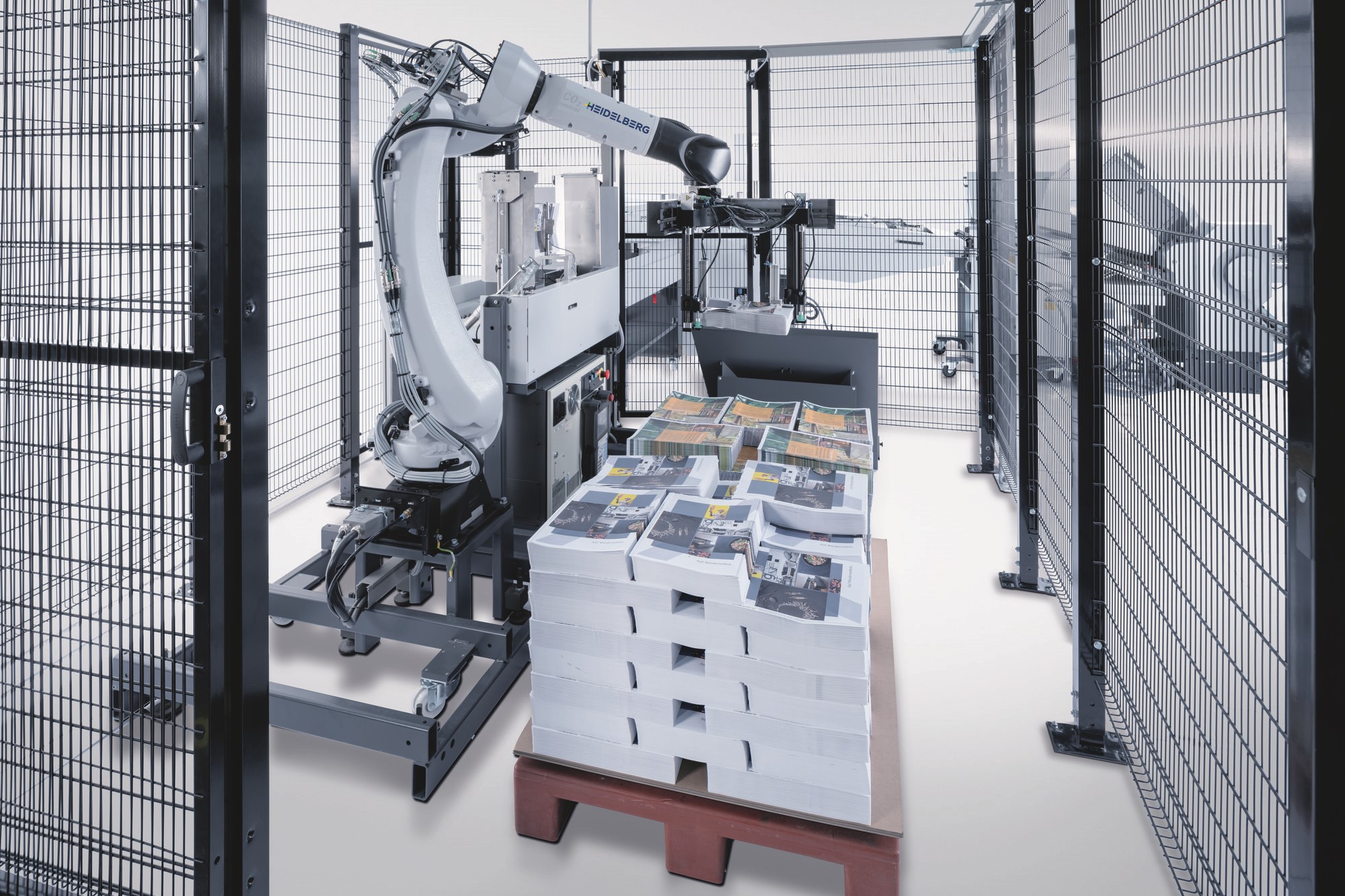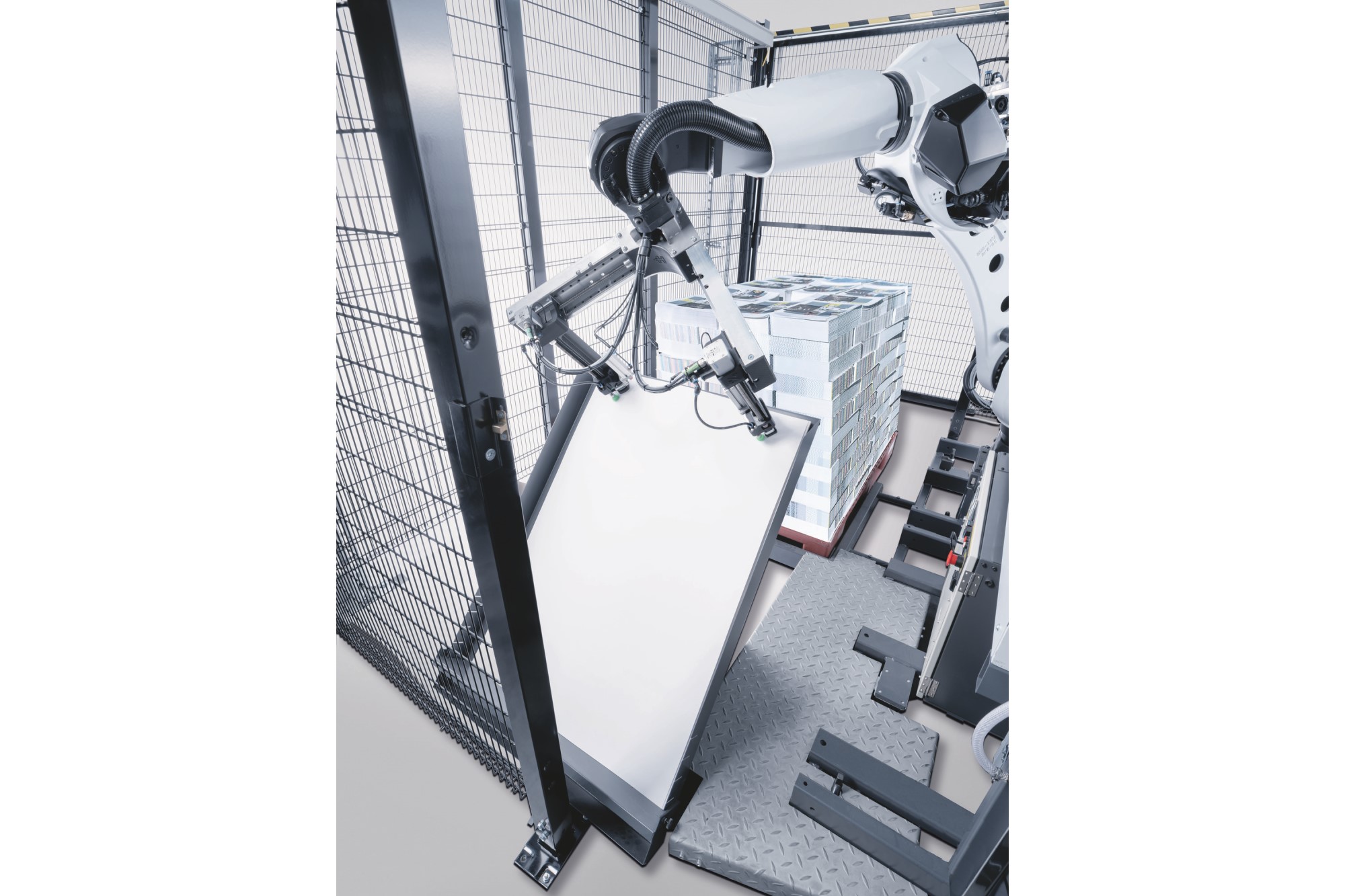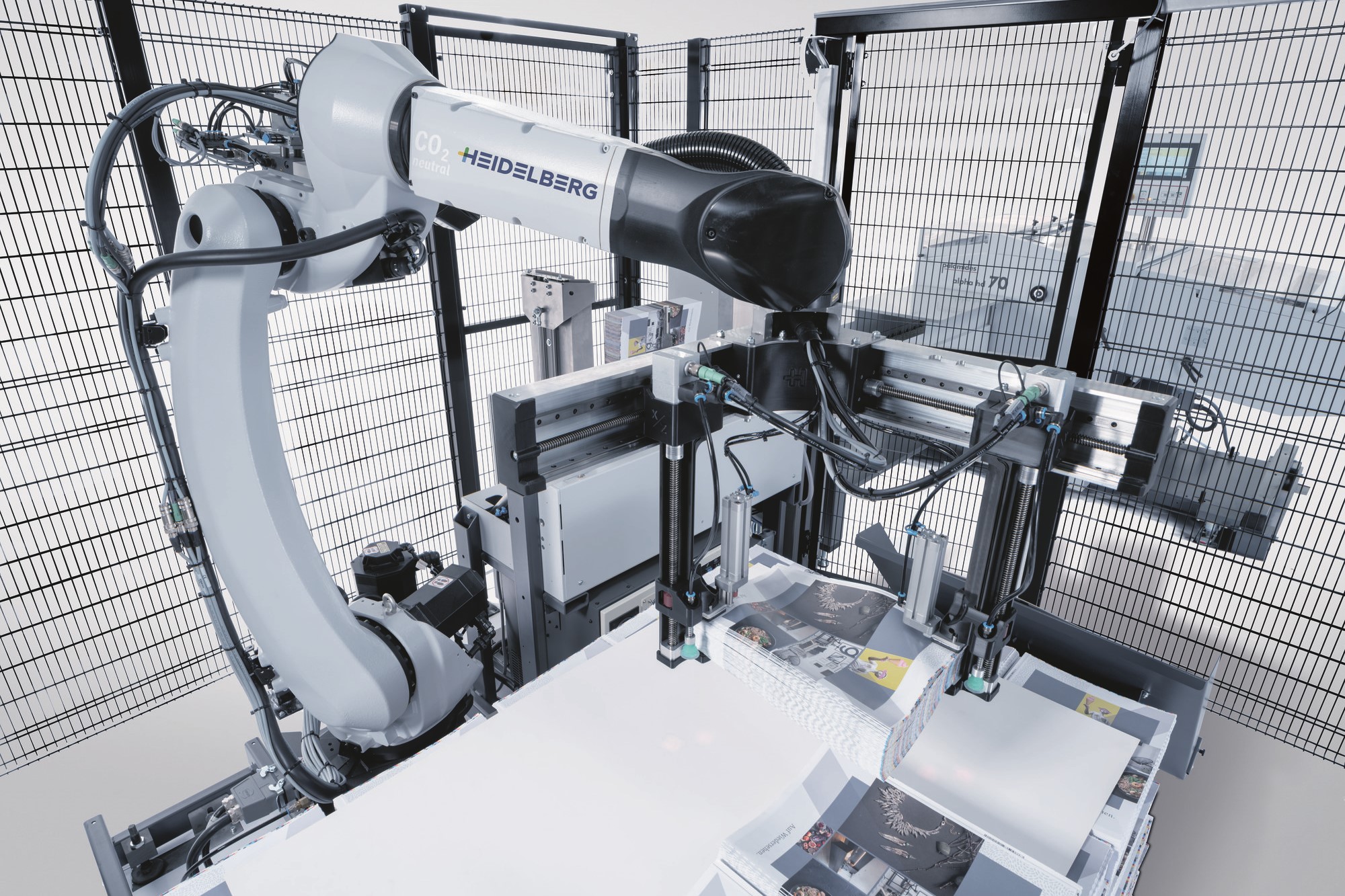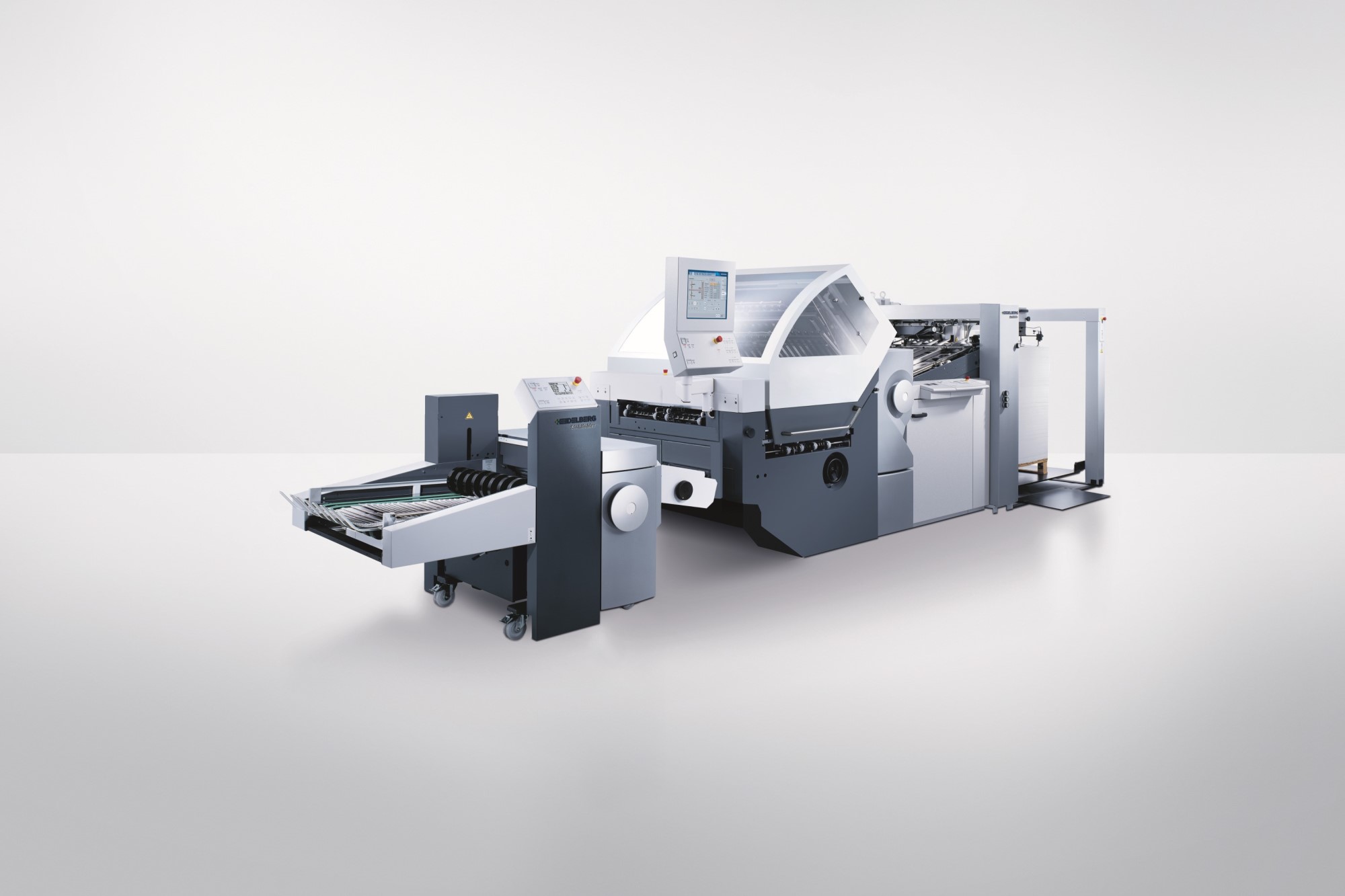
In the Smart Printshop of tomorrow, nothing is left to chance. Material is always in the right place at the right time. At the same time, the flow of information is completely digitised, and the production facilities process orders in the most efficient way possible. Business processes mesh as smoothly as the cogs in a Swiss watch.
Everything is perfectly coordinated. Such a production system is susceptible to unpredictable disruptions caused by human error and influence. Each person works a little differently, and people may make mistakes - as a result, the clockwork gains a creak or even a crack.
Despite rapid technological progress, we are still some way from completely operator-less production. People are still necessary in production, and finishing is particularly labour-intensive. All automation efforts already pursue a common goal: To minimise the human influence on smooth production processes. The priority is no longer on increasing the gross output of the machines. Instead, the aim is to achieve an appropriately high net productivity - but more importantly, continuous production. After all, if you can drive your car at 300 km/h on the racetrack but are constantly stuck in traffic jams under everyday conditions, you won't reach your destination any faster!
This is the thrust of Heidelberg's Push-to-Stop philosophy. The operator should only have to intervene when the process has to be stopped, no matter the variations in customer orders. This eliminates multiple points where human error could creep in, and ensures consistently high system performance. The Speedmaster presses have been demonstrating the benefits for some time now and Heidelberg has been applying the concept to the Heidelberg Stahlfolder folding machines for several years now, with great success, and is constantly expanding it.



Automation is essential to success. This is just as true for specialised industrial operations as it is for small and medium-sized businesses, which are characterised by their versatility and flexibility. It is not always necessary to implement the full automation package - it is much more important to automate in the right places, according to unique requirements.
The reasons for automation can be just as varied as the automation options themselves. For example, a company that must react flexibly and quickly to a wide variety of customer orders, and has few folding machines to fall back on, ideally relies on a folding machine with a high degree of automation in the folding units, in the parallel and, in the case of combination folding machines, also in the cross-fold unit. A suitable folding machine for this example would be the Stahlfolder KH 82 - Ease of Use.
Thanks to its wide range of applications and substrates, this folding machine fits into almost any print shop. The degree of automation on offer means that the machine works with the shortest possible machine set-up times, and the precise accuracy of repeat jobs that comes from the machine memory makes handling short-term job interruptions a cinch. Additionally, the reduced sales price of the promotional model makes it a very attractive investment, especially for smaller companies.
Combining the folding machine with an industrial connection concept of the automatic delivery to the folding machine can save a lot of unproductive downtime when changing the fold type, for example from a 16-page signature to a 32-page signature. With the Flex delivery system, the Palamides Alpha HD delivery is placed on a rail system, and can be moved quickly and easily between the cross-fold deliveries or the folding stations of the folding machine. Instead of guiding the delivery to the folded sheets, the folded sheets are guided to the delivery.

Print shops who can plan and influence their job structure a little better - for example because they produce for their own publishing house or because they have a wider range of machinery that offers corresponding possibilities for alternative production, face other challenges. Here it makes sense to work with highly productive, relatively standardised folders such as the . In this case, the makeready times are somewhat less of an issue, but there is often a lack of staff to unload the folded products from the delivery - especially since the speed of the folding machine is too fast for any human operator to keep up, in the long run. The automated stacking of signature packages, using robot-based stacking systems like the relieves the operators of physical strain and allows them to always call on the full performance of the folding machine. In addition, small breaks for personnel, such as shift changes, can be carried out while the machine is still running. All this has a positive effect on the net productivity of the folding machine.
When selecting a stacking system, it is important to ensure that it is robust enough to have a long service life and high technical availability, even in an industrial environment. Otherwise, the increase in productivity is quickly overcompensated by technical failures. The safety of the employees in the immediate vicinity of the robot also plays an important role.
The early users of the new stacking system from Germany and Austria have reported more than 20% increase in the already highly productivity offered by the folding machines due to the Stahlfolder P-Stacker. In addition, there is a substantial saving in personnel costs: the operation of two folders with only one operator is already a reality in many cases. There are non-monetary advantages as well: increased employee satisfaction and health, rising workplace attractiveness at the folding machine, as well as the external effect through investment in modern robot technology, which indicates the company's culture of progress and innovation.



When all these automation options are combined, it is already possible to produce signatures almost autonomously, with all the advantages of the mentioned flexibility and the reduction in the workload of the operating personnel. At the highest level, formats are already set largely automatically on the Stahlfolder TH 82-P or KH 82-P folding machine, both of which support the shingled folding principle that is still unique today. Signature changes are already carried out fully autonomously in just a few seconds, which boosts the efficiency of the folding machine immensely, especially for shorter runs. The Stahlfolder P-Stacker takes care of stacking the signature packages. In a recently presented video by Heidelberg, a print shop from Germany reports that their recent investment in just such a folding system has delivered an increase in productivity of as much as 100%, compared to a conventional folding machine.
"To maximise productivity, you need automation. The P Technology gives us about an extra 40% productivity with no loss in quality," Rob Cross (Director of Micropress Printers) said, sharing his experience regarding the productivity of the P-Technology against the regular folding technology that his company had used earlier. "With the increase in productivity, the restrictions on speed are now more about handling the folded sections. The knock up and presentation of the folded sections is in general very good for the next finishing process.
"I think you would need more labour on the machine to utilise the full speed enhancement of the P-Folder, but with the automation provided by the P-Stacker we have increased output without needing to add extra labour," he added.
"Since we are now depending more on the machines than on personnel, we need full confidence that support service will always be available to keep the machines running and Heidelberg certainly ticks this box! We have been a partner with Heidelberg for a number of years, and we know that their machines and service are second to none."
Ian Trengrouse, Product Manager Postpress Commercial in the UK, gives us his view on Automation and Robotics in the UK print industry.
"The greatest changes in productivity come when we remove the human element, be it through automated folding machines, autonomous section changes or the stacking down of sections. As soon as the machine becomes the driver, the output increases. This is not always as a pure speed increase - which of course happens with shingling technology - but the overall longtime output is increased due to optimized uninterrupted running time.
"I see a general trend in companies actively investing in our 'P' Technology, both folders and stackers. The 'P' technology has revolutionized the world of post-press production, alongside our automated folders. Finishing has never been so productive. You can print as many sheets as you want, but until they are converted into the final product, flyers, brochures, books, they are of no use to anyone. So having the most efficient processes in the bindery is key to a successful and profitable business."